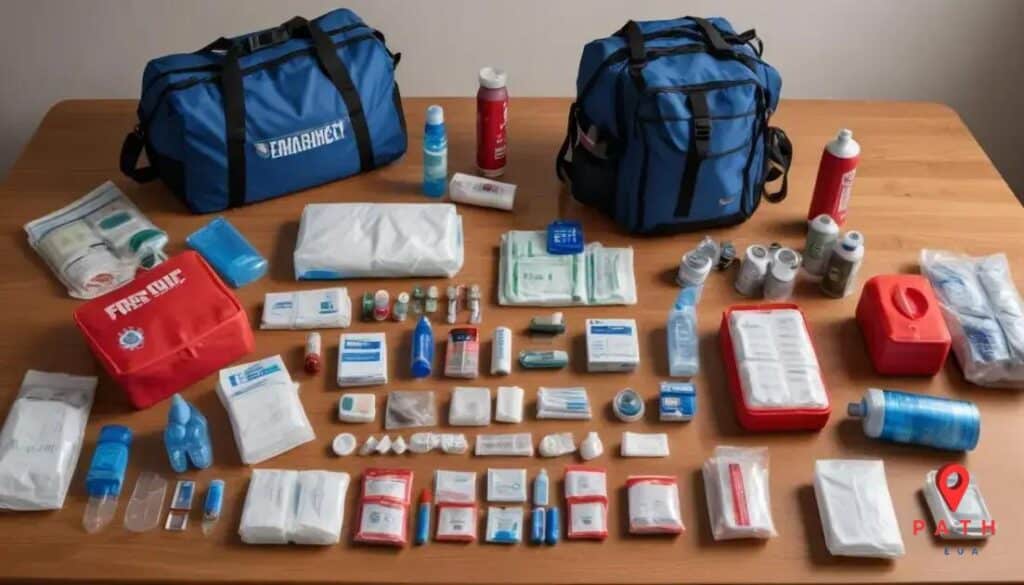US weather emergency: how to prepare effectively

Anúncios
Being prepared for a weather emergency involves understanding types of events, creating a family emergency plan, gathering essential supplies, staying informed, and following specific recovery steps to ensure safety and stability.
US weather emergency situations can strike unexpectedly, leaving many unprepared. Have you thought about how you would respond to a hurricane or blizzard? This article dives into essential tips to ensure your safety in challenging times.
Understanding the types of weather emergencies
Understanding the different types of weather emergencies is crucial for effective preparedness. From hurricanes to tornadoes, each event has unique characteristics and safety concerns.
Anúncios
It’s essential to recognize the warning signs and alerts issued by local authorities. Knowing what to look for can help ensure your safety.
Common Types of Weather Emergencies
Below are some common weather emergencies you might encounter:
Anúncios
- Hurricanes: Often accompanied by strong winds and heavy rain, hurricanes can cause flooding and destruction.
- Tornadoes: Characterized by rotating winds, tornadoes can develop quickly and result in severe damage.
- Winter storms: Snow and ice can create hazardous conditions and may lead to power outages.
For more detailed information, you can visit the Ready.gov website.
| Category | Key Point | Purpose / Benefit |
|---|---|---|
| Types of Emergencies | Hurricanes, tornadoes, winter storms | Recognize threats and respond early |
| Emergency Kit | Water, food, first aid, flashlight | Support survival during outages |
| Family Plan | Assign roles and meeting points | Ensure family safety and coordination |
| Communication | Plan for staying in contact | Locate and update loved ones |
| Stay Informed | Use apps, radios, and local news | Make timely, informed decisions |
| Check for Injuries | Assess health after the event | Treat issues quickly and safely |
| Property Damage | Inspect and document damages | Support insurance claims |
| Recovery Steps | Contact authorities and insurance | Begin recovery and repairs |
Essential supplies for weather emergencies
Being prepared for a weather emergency means having essential supplies on hand. These items can help ensure your safety and well-being before, during, and after a crisis.
To make your preparations effective, consider packing a weather emergency kit that includes items for communication, sustenance, and basic needs.
Key Supplies to Include
- Water: Store at least one gallon of water per person per day for three days.
- Non-perishable food: Keep a supply of food that does not require cooking, like canned goods and energy bars.
- First aid kit: Include items such as bandages, antiseptics, and any necessary medications.
For more information about emergency supplies, visit the Ready.gov website for detailed guidelines.
Creating a family emergency plan

Creating a family emergency plan is essential for ensuring everyone’s safety during a weather emergency. This plan helps your family know what to do and where to go when faced with a crisis.
A good emergency plan should include specific roles for each family member, communication methods, and evacuation routes.
Steps to Create Your Plan
Follow these steps to build an effective family emergency plan:
- Discuss your plan: Sit down as a family to talk about potential emergencies and how to respond.
- Assign roles: Designate responsibilities for each family member, such as who will grab the emergency kit and who will contact relatives.
- Establish communication: Choose a reliable way for family members to communicate during and after an emergency, especially if separated.
For detailed guidance on crafting your family emergency plan, visit the Ready.gov website.
Staying informed during severe weather
Staying informed during severe weather is vital for ensuring your safety and making timely decisions. Knowing what is happening around you can help you take appropriate actions when faced with a weather emergency.
Access to reliable information is critical, especially as conditions can change rapidly.
Ways to Stay Informed
Here are effective ways to keep track of weather updates:
- Weather apps: Download trusted weather apps that provide real-time alerts and forecasts tailored to your location.
- Local news stations: Listen to local radio or TV channels for live updates and emergency instructions from officials.
- NOAA Weather Radio: Use a NOAA weather radio to receive alerts and updates directly from the National Oceanic and Atmospheric Administration.
To learn more about staying informed during severe weather, visit the National Weather Service website.
Recovery steps after a weather emergency
Recovering after a weather emergency can be challenging, but following specific steps will help you regain stability and ensure safety. Many people might feel overwhelmed, so it’s important to take organized actions.
Your recovery process should focus on immediate needs and long-term rebuilding.
Essential Recovery Steps
Here are essential steps to follow after facing a weather emergency:
- Check for injuries: Ensure that everyone in your household is safe and address any medical needs promptly.
- Assess damage: Carefully evaluate your property for damage. Take photos for insurance claims and document the situation.
- Contact authorities: Report any hazards to local authorities, and reach out to your insurance company to start the claims process.
For more information on recovery resources and assistance, visit the FEMA website.
In conclusion: preparing for weather emergencies
Being prepared for a weather emergency means taking important steps to ensure safety and recovery. By understanding types of emergencies, creating a family plan, gathering essential supplies, and staying informed, you can protect yourself and your loved ones.
After an emergency, it is crucial to follow recovery steps to rebuild and regain stability. Recovery may take time, but with the right knowledge and resources, you can navigate the challenges ahead.
Remember, the more proactive you are now, the better prepared you’ll be in the future. Don’t wait for a storm to start your preparations!